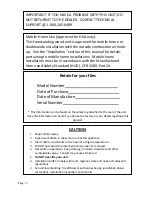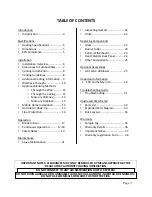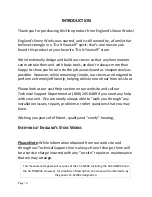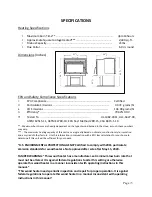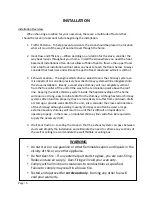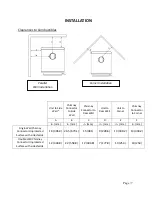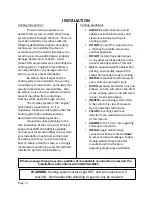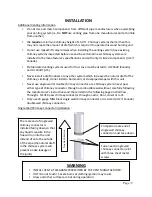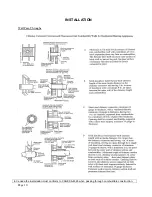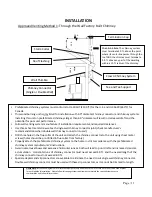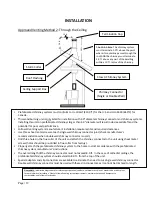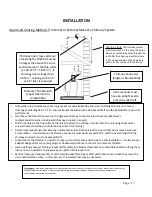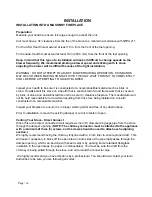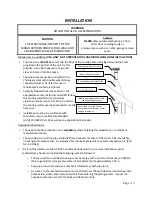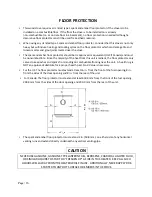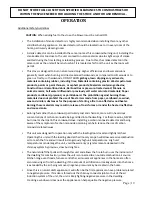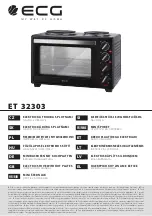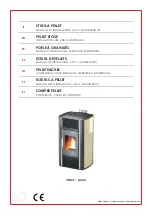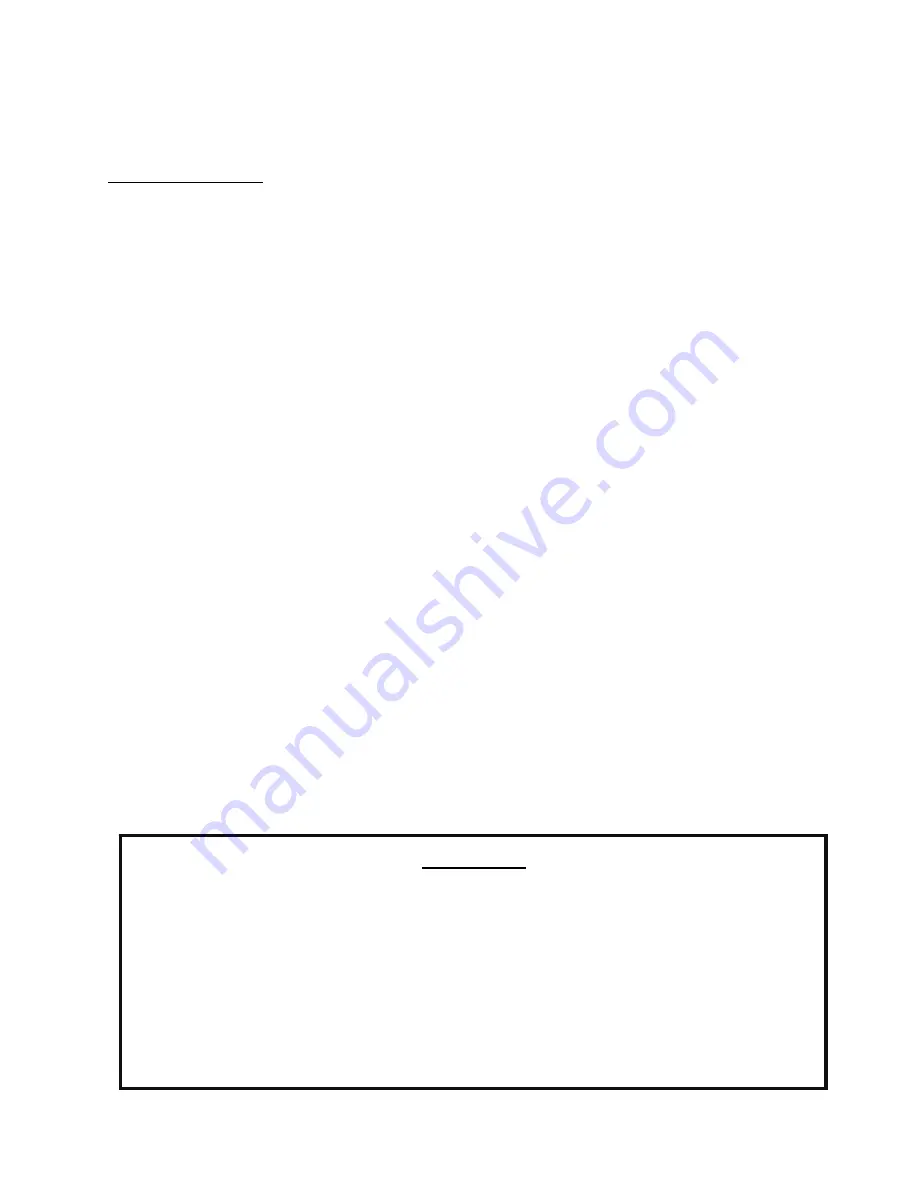
Page | 6
INSTALLATION
Installation
Overview
When
choosing
a
location
for
your
new
stove,
there
are
a
multitude
of
factors
that
should
be
taken
into
account
before
beginning
the
installation.
1.
Traffic
Patterns
–
To
help
prevent
accidents,
the
stove
should
be
placed
in
a
location
where
it
is
out
of
the
way
of
normal
travel
through
the
home.
2.
Heat
Flow
and
Efficiency
–
When
deciding
on
a
location
for
the
stove,
consider
the
way
heat
moves
throughout
your
home.
Install
the
stove
where
you
need
the
heat;
basement
installations
often
do
not
allow
sufficient
heat
to
flow
to
the
upper
floors
and
a
top
floor
installation
will
not
allow
any
heat
to
reach
the
floors
below.
Always
consider
that
heat
rises
and
will
take
the
path
of
least
resistance
while
it
is
still
hot.
3.
Exhaust
Location
–
The
engine
which
drives
a
wood
stove
is
the
chimney
system,
so
it
is
important
to
consider
precisely
how
the
chimney
system
will
be
integrated
into
the
stove
installation.
Ideally,
a
wood
stove
chimney
will
run
completely
vertical
from
the
flue
collar
of
the
unit
all
the
way
to
the
termination
point
above
the
roof
line.
Keeping
the
entire
chimney
system
inside
the
heated
envelope
of
the
home
will
ensure
a
strong,
easy
to
initiate
draft
in
the
chimney.
Although
exterior
chimney
systems
often
function
properly,
they
are
more
likely
to
suffer
from
cold
down
drafts
at
start
up
or
provide
weak
draft
to
the
unit.
Also,
consider
the
cross
‐
sectional
area
of
the
chimney;
although
existing
masonry
chimneys
can
often
be
used,
a
large
external
masonry
chimney
will
result
in
a
unit
that
is
difficult
or
impossible
to
operate
properly.
In
that
case,
an
insulated
chimney
liner
will
often
be
required
to
supply
the
necessary
draft.
4.
Wall
Construction
–
Locating
the
stove
so
that
the
exhaust
system
can
pass
between
studs
will
simplify
the
installation
and
eliminate
the
need
to
reframe
any
sections
of
the
wall
or
ceiling
to
accommodate
the
wall
thimble
or
ceiling
box.
WARNING
•
Do
not
store
or
use
gasoline
or
other
flammable
vapors
and
liquids
in
the
vicinity
of
this
or
any
other
appliance.
•
Do
Not
Over
‐
fire
–
If
any
external
part
starts
to
glow,
you
are
over
‐
firing.
Reduce
intake
air
supply.
Over
‐
firing
will
void
your
warranty.
•
Comply
with
all
minimum
clearances
to
combustibles
as
specified.
Failure
to
comply
may
result
in
a
house
fire.
•
Tested
and
approved
for
cordwood
only
.
Burning
any
other
fuel
will
void
your
warranty.


